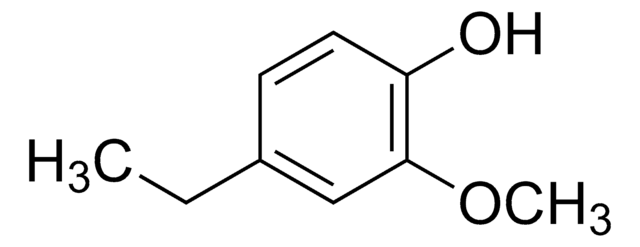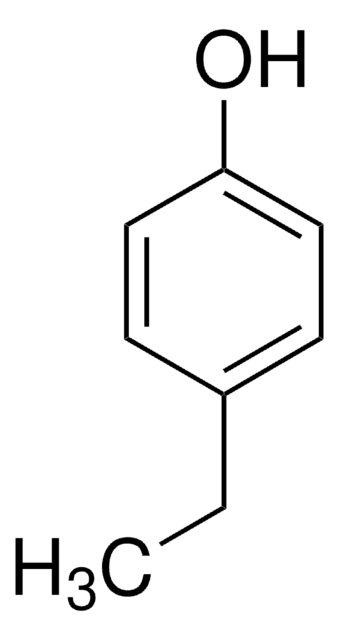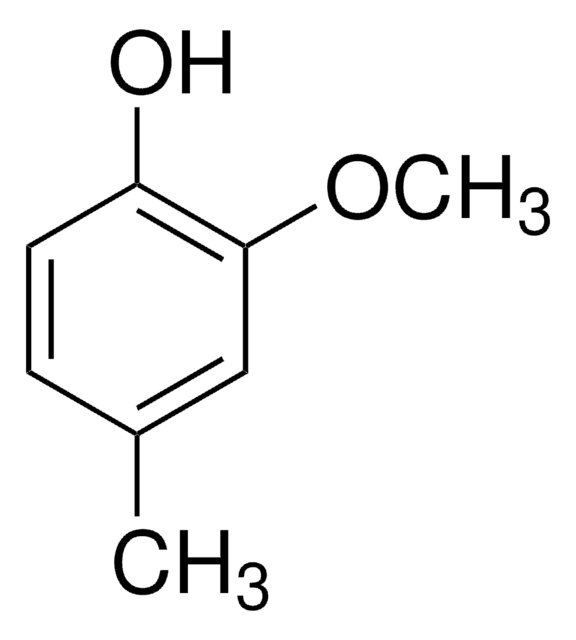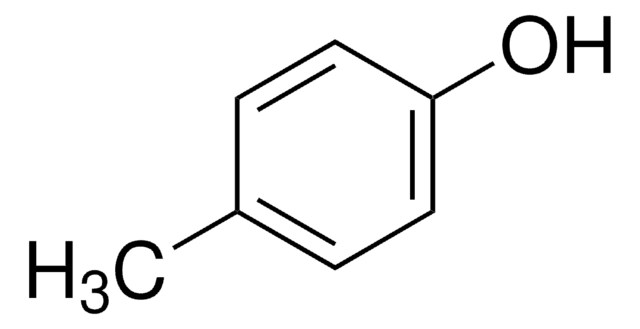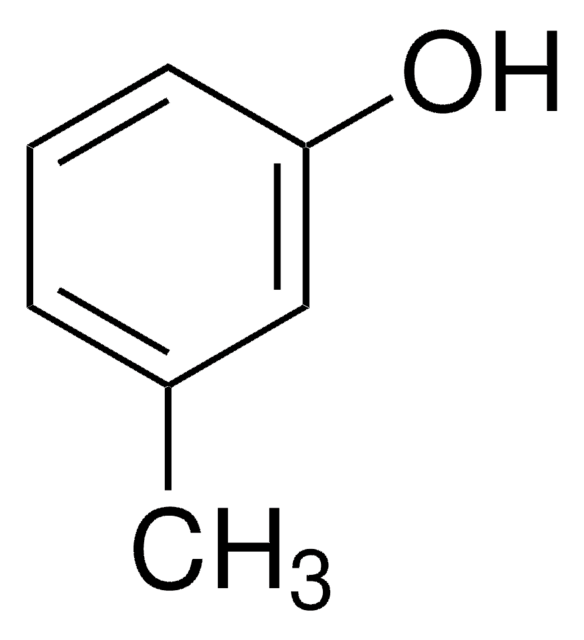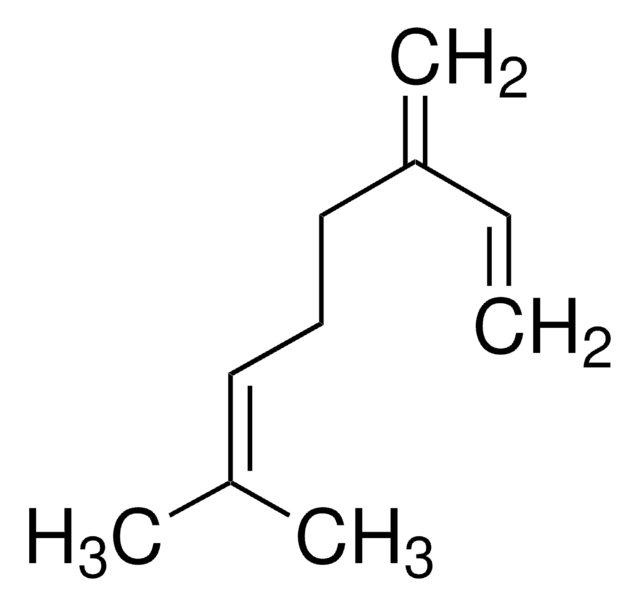Key Documents
39774
4-Ethylguaiacol
analytical standard
Synonim(y):
4-Ethyl-2-methoxyphenol, NSC 82313
About This Item
Polecane produkty
klasa czystości
analytical standard
Poziom jakości
Próba
≥98.0% (GC)
okres trwałości
limited shelf life, expiry date on the label
metody
HPLC: suitable
gas chromatography (GC): suitable
współczynnik refrakcji
n20/D 1.528 (lit.)
n20/D 1.529
tw
234-236 °C (lit.)
mp
15 °C (lit.)
gęstość
1.063 g/mL at 25 °C (lit.)
Zastosowanie
cleaning products
cosmetics
flavors and fragrances
food and beverages
personal care
format
neat
temp. przechowywania
2-8°C
ciąg SMILES
CCc1ccc(O)c(OC)c1
InChI
1S/C9H12O2/c1-3-7-4-5-8(10)9(6-7)11-2/h4-6,10H,3H2,1-2H3
Klucz InChI
CHWNEIVBYREQRF-UHFFFAOYSA-N
Szukasz podobnych produktów? Odwiedź Przewodnik dotyczący porównywania produktów
Opis ogólny
Zastosowanie
- Commercial soy sauce using gas chromatography-olfactometry (GC-O).
- Red wine using gas chromatography-mass spectrometry (GC-MS).
- Apple cider using gas chromatography-olfactometry (GC-O) and gas chromatography-mass spectrometry (GC-MS).
Hasło ostrzegawcze
Warning
Zwroty wskazujące rodzaj zagrożenia
Zwroty wskazujące środki ostrożności
Klasyfikacja zagrożeń
Eye Irrit. 2 - Skin Irrit. 2 - STOT SE 3
Organy docelowe
Respiratory system
Kod klasy składowania
10 - Combustible liquids
Klasa zagrożenia wodnego (WGK)
WGK 2
Temperatura zapłonu (°F)
226.4 °F - closed cup
Temperatura zapłonu (°C)
108 °C - closed cup
Wybierz jedną z najnowszych wersji:
Masz już ten produkt?
Dokumenty związane z niedawno zakupionymi produktami zostały zamieszczone w Bibliotece dokumentów.
Klienci oglądali również te produkty
Nasz zespół naukowców ma doświadczenie we wszystkich obszarach badań, w tym w naukach przyrodniczych, materiałoznawstwie, syntezie chemicznej, chromatografii, analityce i wielu innych dziedzinach.
Skontaktuj się z zespołem ds. pomocy technicznej